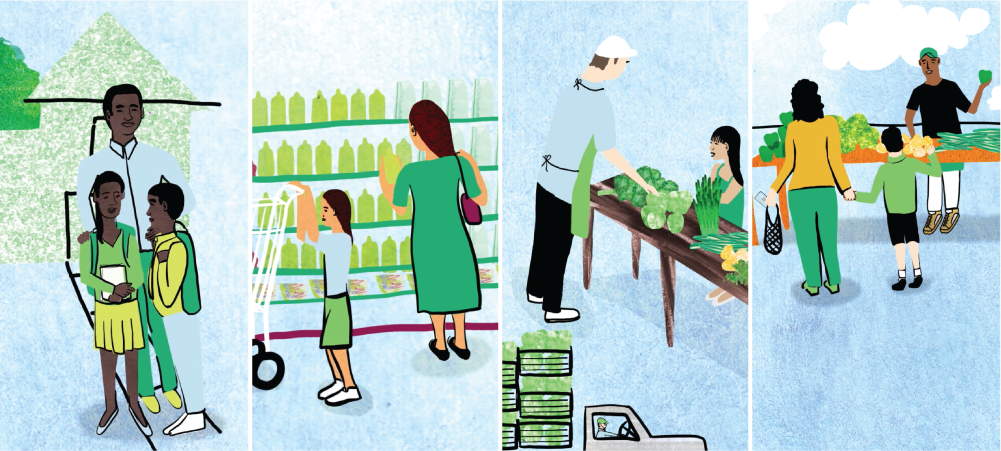SNAP in America with StoryCorps

Today, around 43 million people — roughly one of every eight Americans — receive food stamps, formally known as the Supplemental Nutrition Assistance Program, or SNAP. That is more than the entire population of California, the most populous state in the nation.
SNAP caseloads have exploded in the wake of COVID. In the first three months of the coronavirus crisis, more than six million people signed up for food stamps to keep food on their tables. Many states, like Michigan, have experienced double digit caseload growth, an unprecedented expansion that may only continue as the coronavirus sparks continued unemployment and economic turbulence.
But even with this critical safety net, “food insecurity” — and even outright hunger — remains high. A new survey by the Urban Institute also found marked racial and ethnic disparities with food insecurity rates for Black and Latinos twice that for whites.
Healthy food incentive programs like Double Up Food Bucks work alongside this critically important program to enhance its benefits and make it work harder for families, farmers, and local economies.
Here’s how: Healthy food incentives immediately increase the buying power of families, helping them bring home more food. In addition, those dollars are prioritized for fruits and vegetables, simultaneously reducing hunger while improving nutrition. But the benefits don’t stop there: When linked to local produce, incentives put more money in the pockets of area farmers and keep food dollars circulating in our communities, building stronger local economies and more resilient food systems.
We partnered with StoryCorps and the Robert Wood Johnson Foundation to lift up the voices behind SNAP in America. Working with an independent artist, we’ve brought some of the stories to life in a new animated series that provides an intimate look at what food insecurity looks like in our country.
Eleanor and Tabatha both grew up in households that used SNAP. From a young age, they learned to shop on a tight budget, helped their mom out while she worked multiple jobs, and ate what they could find in the cupboard. Listen to their reflections on growing up with SNAP, and their hopes for future policy change, because “food is the most basic thing.”
When Max’s dad needed emergency surgery, Max and Catherine applied for food assistance. They couldn’t afford the procedure and keep food on their table without help. Listen to their story.
In this video, you’ll hear from Anthony and Jesse, who overcame the stigma surrounding food assistance in order to provide for their families. Listen to their conversation.
Hear the story of two veterans-turned-farmers who offer SNAP and Double Up to both feed their community and support their livelihoods. Listen to the conversation with Adam and Jeremy.







